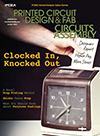Products
Servo-Flo 505 Fixed-Ratio Meter System is for automated, robotic or manual dispensing applications. This single-servomotor dispensing system allows fixed and variable dispense rates while providing on-ratio materials that meet suppliers’ specifications.
Three levels of operator interface controls are available; these quickly set output flow rates and adjust material volume settings. The automation or the operator can select different stored flow and volume programs.
Has positive rod displacement metering, dispenses precise bead profiles or precision volumetric shots. Flow rates are varied on-ratio during the dispense cycle to provide different shot flows, bead diameters and tip speeds.
Accepts low- to high-viscosity materials and is supplied by pumps or pressure tanks. Meter, control panel and supply can be floor-mounted, portable-cart mounted or enclosed in a cabinet.
Three levels of operator interface controls are available; these quickly set output flow rates and adjust material volume settings. The automation or the operator can select different stored flow and volume programs.
Has positive rod displacement metering, dispenses precise bead profiles or precision volumetric shots. Flow rates are varied on-ratio during the dispense cycle to provide different shot flows, bead diameters and tip speeds.
Accepts low- to high-viscosity materials and is supplied by pumps or pressure tanks. Meter, control panel and supply can be floor-mounted, portable-cart mounted or enclosed in a cabinet.
Sealant Equipment & Engineering, sealantequipment.com
The effectiveness of board level EMI/RFI shielding depends on many factors: the design of the shielding can, material choice, thickness, venting, method of attachment and the ‘maximum linear dimension’ (the longest contiguous hole or slot). This maximum opening size is a function of the frequency spectrum of the device being shielded and of the attenuation you are trying to achieve.
Profiled and folded shielding cans offer many benefits, including bespoke design, exceptional co-planarity, low tooling costs etc., but one drawbacks is the corner seam, which can act as an emitter antenna if it is not folded and mounted with care. This corner seam can be soldered for complete integrity in high frequency applications but much of the time, the need is simply to reduce the maximum linear dimension.
A new finger joint arrangement on the corner seam allows two adjacent walls to interlock along the corner seam.
Profiled and folded shielding cans offer many benefits, including bespoke design, exceptional co-planarity, low tooling costs etc., but one drawbacks is the corner seam, which can act as an emitter antenna if it is not folded and mounted with care. This corner seam can be soldered for complete integrity in high frequency applications but much of the time, the need is simply to reduce the maximum linear dimension.
A new finger joint arrangement on the corner seam allows two adjacent walls to interlock along the corner seam.
The Quiet Corner design reportedly improves noise attenuation and the mechanical stability of the shielding can.
Ultrasonic Systems will demonstrate the Optima Fluxing System at Productronica next month, in Hall A4 Booth 158. A new Ultra-Spray head produces a more vertical spray pattern, ensuring through-hole penetration when using water-based VOC-free fluxes.
Ultrasonically atomizes VOC-free flux into a fine mist, and then traverses the spray under the circuit at programmable speeds, ensuring flux penetration of the plated-through holes.
Can process circuit boards up to 24” (61 cm) wide and 0.250” (6.35 mm) thick, with plated through holes of 0.015” (0.381 mm) in diameter.
Optima Fluxing System, ultraspray.com.
Ultrasonically atomizes VOC-free flux into a fine mist, and then traverses the spray under the circuit at programmable speeds, ensuring flux penetration of the plated-through holes.
Can process circuit boards up to 24” (61 cm) wide and 0.250” (6.35 mm) thick, with plated through holes of 0.015” (0.381 mm) in diameter.
Optima Fluxing System, ultraspray.com.
Press Releases
- Aegis Software Expands its Presence in France and Partners with STPGroup
- Altus Adds Breakthrough Automated Inline Laser Depaneling System to its Line-Up
- Fuji America Promotes Chris Dayney to Technical Marketing Manager, Expanding Focus on Premium Technical Content
- BTU International Announces Strategic Manufacturing Expansion in Singapore to Strengthen Global Supply Chain


